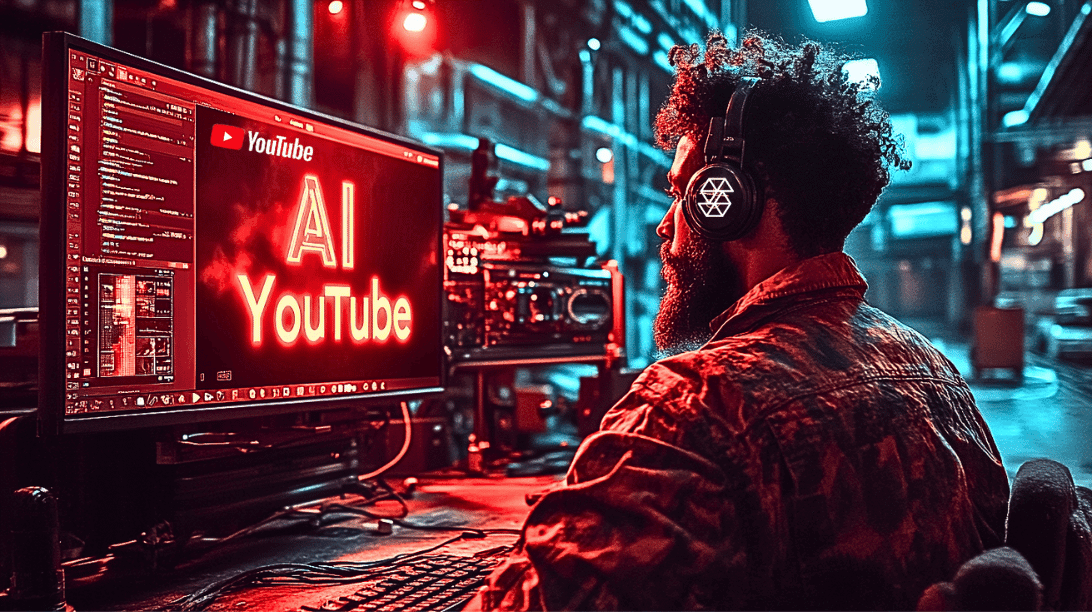The Top 10 AI Statistics for Consumer & Workforce in 2024
In 2024, Artificial Intelligence (AI) continues its transformative journey, reshaping various aspects of our daily life and work. This blog aims to unravel the complexities of AI’s impact through ten pivotal statistics highlighting consumer attitudes and workforce dynamics. We’ll explore consumer trust in AI-enabled businesses, the role of AI in content creation, and the widespread concerns about AI’s potential effects on employment.
Our journey also encompasses AI’s role in job creation, its increasing demand in specialized fields, and its notable economic influence, particularly in the manufacturing sector. Additionally, we examine the integration of AI into everyday activities like voice search, underlining its growing ubiquity. This exploration not only offers a snapshot of the current AI landscape but also provides insight into its future trajectory and societal implications.
For more AI stats, check out our other blogs:
Here are the Top 10 consumer and workforce AI stats to know for 2024:
- 1. The Majority of Consumers are Concerned About Businesses Using AI
- 2. 65% of Consumers Say They’ll Still Trust Businesses Who Use AI
- 3. More Than Half Believe AI Will Improve Written Content
- 4. 77% Are Concerned That AI Will Cause Job Loss in the Next Year
- 5. 400 Million Workers Could Be Displaced Because of AI
- 6. Research Estimates AI Will Create 97 Million Jobs
- 7. Software Engineers and Data Engineers are Being Recruited for AI Support
- 8. The Manufacturing Industry is Expected to See the Largest Financial Impact Due to AI
- 9. Half of U.S. Mobile Users Use Voice Search Every Day
- 10. Most Popular AI Uses in 2024
- Embracing AI: A Look Ahead in 2024
1. The Majority of Consumers are Concerned About Businesses Using AI
As AI becomes increasingly integrated into business operations, a significant majority of consumers are voicing their concerns. These apprehensions stem from issues like data privacy, decision-making transparency, and the fear of reduced human interaction. Consumers worry about how AI might handle their personal information and whether AI decisions are fair and unbiased. To alleviate these concerns, businesses must prioritize transparent AI policies, ensuring that AI systems are ethical, accountable, and understandable to their users. Additionally, educating consumers about the benefits and limitations of AI can help in building trust.
2. 65% of Consumers Say They’ll Still Trust Businesses Who Use AI
Despite prevailing concerns, 65% of consumers maintain their trust in businesses that utilize AI. This trust is contingent on businesses using AI responsibly and transparently. Consumers value when businesses use AI to enhance customer experiences, personalize services, and improve efficiency, as long as these advancements don’t compromise ethical standards or personal privacy. Companies that openly communicate their AI use policies, adhere to ethical AI practices, and demonstrate the value added by AI are more likely to retain consumer trust. This balance of innovation with responsibility is key to sustaining consumer confidence in an AI-driven future.

3. More Than Half Believe AI Will Improve Written Content
Over half of the surveyed individuals in a Forbes Advisor survey believe that AI has the potential to significantly improve written content. This optimistic view is bolstered by AI-driven solutions like ChatGPT, which have demonstrated capabilities in enhancing text quality, creativity, and efficiency. AI’s role in content creation is increasingly being recognized in various industries, from marketing to journalism. Its ability to analyze vast data sets and generate coherent, contextually relevant content can aid in producing more engaging, diverse, and high-quality written material. As AI technology continues to evolve, its impact on the creative industries is expected to grow, offering new tools and possibilities for content creators.
4. 77% Are Concerned That AI Will Cause Job Loss in the Next Year
A considerable 77% of people are apprehensive about AI’s potential to cause job losses in the near future. This widespread concern is rooted in the rapid advancement of AI technologies, which are perceived as replacing human roles in various sectors. Industries like manufacturing, customer service, and even some aspects of knowledge work are viewed as particularly vulnerable. To mitigate these concerns, it’s crucial for businesses and governments to focus on re-skilling and up-skilling programs, ensuring the workforce is prepared for a more AI-integrated job market. Additionally, highlighting AI’s role as a collaborator rather than a replacement can help in shifting the narrative towards a more optimistic outlook on AI and employment.
5. 400 Million Workers Could Be Displaced Because of AI
According to a report by McKinsey, AI advancements could lead to the displacement of approximately 400 million workers globally by 2030. This significant impact, affecting roughly 15% of the global workforce, underscores the transformative nature of AI across various sectors. Industries that rely heavily on routine tasks, such as manufacturing and retail, are likely to be most affected. However, the report also suggests that this shift can lead to the creation of new jobs, provided there is adequate investment in training and education. Businesses and policymakers need to strategize on how to manage this transition, focusing on workforce adaptability and the creation of new opportunities in the evolving job landscape.

6. Research Estimates AI Will Create 97 Million Jobs
Contrasting the concerns of job displacement, research by the World Economic Forum projects that AI will create around 97 million new jobs. These jobs are expected to emerge in fields that blend AI technology with human skills, such as AI maintenance, data analysis, and content creation. The demand for skills in AI management, decision-making with AI insights, and AI ethics will likely rise. This positive outlook emphasizes the need for current and future workforce members to acquire new skills and adapt to a changing job market where AI plays a significant role. Educational institutions and corporate training programs will play a crucial part in preparing individuals for these emerging job roles, ensuring a smooth transition into an AI-augmented work environment.
7. Software Engineers and Data Engineers are Being Recruited for AI Support
The integration of AI into business operations has led to a significant increase in the demand for AI support roles, particularly for software and data engineers. 39% of businesses are recruiting software engineers and 35% are hiring data engineers for AI-related tasks. This surge reflects the growing need for professionals skilled in developing, managing, and optimizing AI systems. The impact is twofold: it creates new job opportunities and drives changes in the educational sector, where curriculums must evolve to include AI-centric skills and knowledge. The growth in these roles also indicates a broader shift in the job market, with a greater emphasis on technical proficiency in AI and data management.
8. The Manufacturing Industry is Expected to See the Largest Financial Impact Due to AI
A significant financial boon for the manufacturing industry is coming from AI adoption, with an estimated gain of $3.8 trillion by 2035. This potential financial impact underscores AI’s role in transforming manufacturing processes, enhancing efficiency, and opening up new avenues for innovation. However, this transformation is not without its challenges. The industry will need to navigate the integration of AI with existing systems, address skill gaps in the workforce, and manage the ethical implications of AI deployment. The potential for increased productivity, cost savings, and quality improvements positions AI as a pivotal factor in the future of manufacturing.

9. Half of U.S. Mobile Users Use Voice Search Every Day
Voice search, powered by AI, has become a daily habit for 50% of U.S. mobile users. This trend highlights the growing integration of AI-powered voice assistants in everyday life, reshaping how users interact with technology. The implications are vast, affecting marketing strategies, technology development, and overall user experience. Businesses need to adapt to this trend by optimizing their content for voice search and considering voice interaction in their digital offerings. The rise in voice search also reflects the evolving landscape of AI in consumer technology, emphasizing the need for intuitive and user-friendly AI interfaces.
10. Most Popular AI Uses in 2024
In 2024, AI’s versatility is increasingly evident in its range of applications, transforming everyday tasks and activities. Popular uses include responding to messages, answering financial questions, planning travel itineraries, and crafting social media posts. These applications showcase AI’s ability to streamline tasks, offer personalized solutions, and enhance creativity. The widespread adoption of these AI tools reflects a growing comfort with AI in daily life, signaling a shift in how individuals and businesses approach routine tasks. As AI continues to evolve, its role in simplifying and enriching personal and professional activities will likely expand, further integrating into the fabric of daily life.
Embracing AI: A Look Ahead in 2024
These AI statistics for 2024 paint a vivid picture of a world increasingly intertwined with artificial intelligence. While consumer concerns remain, a significant majority continue to trust businesses that responsibly implement AI. The optimistic view of AI improving content quality and creating new job opportunities is balanced by apprehensions about job displacement and the need for upskilling.
Industries like manufacturing are poised to reap substantial financial benefits, and the surge in AI support roles highlights a shifting job market landscape. The rising use of voice search and diverse AI applications in daily tasks underline AI’s growing influence on consumer behavior and business strategies.
As we move forward, understanding and adapting to these trends will be crucial for businesses and individuals alike, positioning AI as a key driver of innovation and efficiency in our rapidly evolving digital world.
Sources: Forbes Advisor. UpCity, McKinsey & Company, WeForum, Accenture






